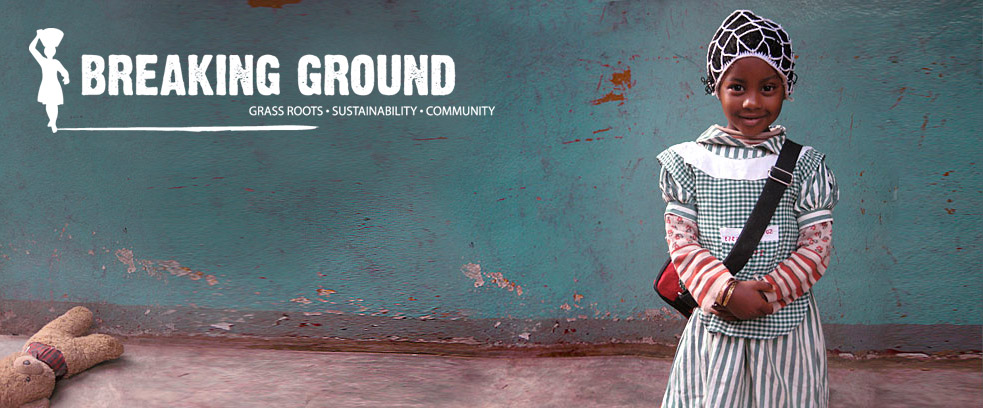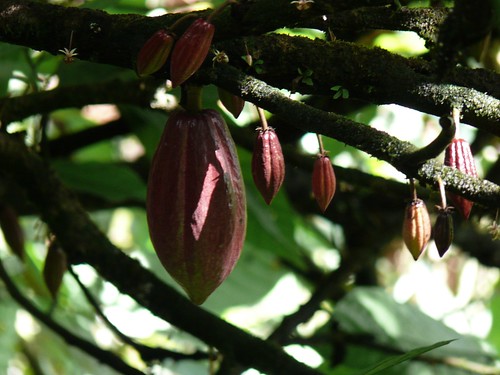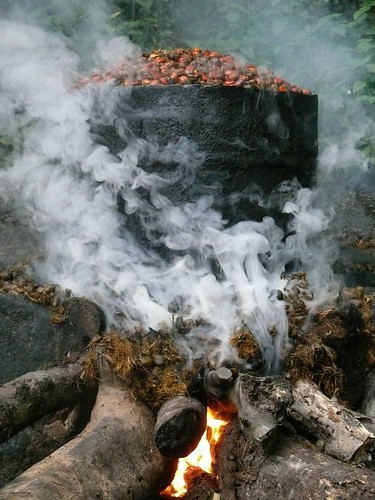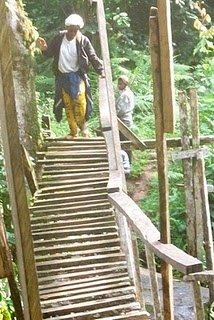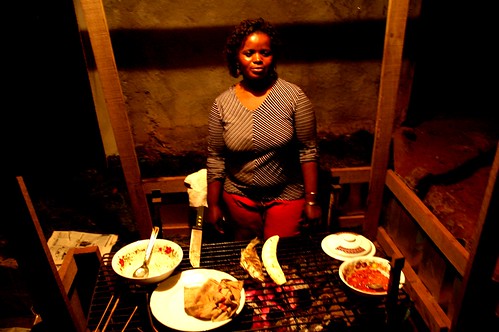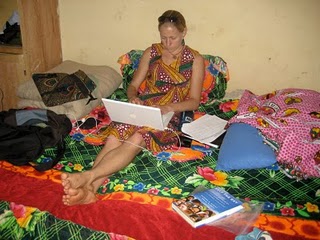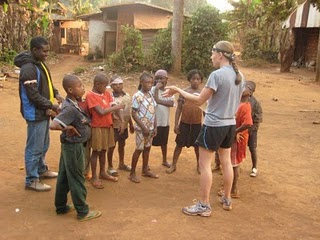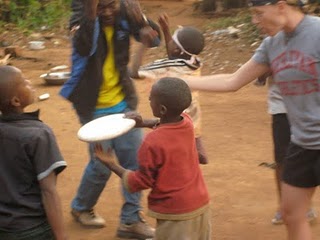Investing in Agriculture Update: December 2010
 Tuesday, December 7, 2010 at 12:56PM
Tuesday, December 7, 2010 at 12:56PM 
Pilot program launched in SW Cameroon
After spending many months conducting research, this September, Breaking Ground launched a pilot
agricultural program in the villages of Folepi and Nkeng, in the Wabane-Alou Valley of South West
Cameroon. The pilot, which is transitioning farmers to more productive species of palm and cocoa trees,
is a vital step towards developing a larger program in the valley.
The majority of families who live in the valley, rely on the income from the palm oil and cocoa produced
by their plot of land. While men are responsible for the harvesting of the palm nuts, men and women
work together during the extraction of the red palm oil, and women, helped by adolescent girls, are
exclusively responsible for the cracking of the palm kernels and extraction of the palm kernel oil. Often,
siblings like Mathias and Catherine, work together to collect the palm nuts and cocoa pods from their
land. Each family farms about 2 hectares worth of palm trees and earns on average 325,000fCFA
(approximately $650) a year from the sale of the palm oil. Simply by transitioning to a better quality of
palm tree, we expect to increase the farmers’ income to about 1,100,000f CFA (approximately $2,200).
In October, despite heavy rains, Paul worked with the villagers of Folepi and Nkeng to set up a palm
tree nursery in each village. We are also working with the National Agricultural Research Institute
for Development (IRAD) who has provided the cocoa pods as part of a national program promoting
sustainable agriculture. By the end of the year, both villages will have a nursery of these improved cocoa
pods.
In addition to assisting with the transition of crops, we will be training the farmers in plantation
management, and running a Women’s Entrepreneurial Program adapted to the needs of these
agricultural communities. Starting in January, these classes will cover crop diversification, family
budgeting and cover basic maternal and infant health.
After the completion of this initial pilot, Breaking Ground hopes to expand our work to other villages in
the valley and to be able to provide loans for mechanized presses. These communities are motivated
and excited to learn new methods, increase their income and to be able to invest in their collective
needs: potable water, passable roads and better schools.
Improved Crops: By transitioning to species of palm and cocoa trees that produce a higher quality
product, we will increase the farmer’s revenue and thus allow them to invest in their community.
Diversification: We will be working with the farmers to integrate plantains, pineapples and other
vegetables into their fields as well as providing the start-up funds to raise livestock. This increases
household food security and improves their families’ nutrition. Remove soil part
Mechanized processing: One of the long-term goals of the program is to organize the farmers into
groups that will collectively purchase palm oil presses. Currently this process is done by hand, often by
young girls who would otherwise be in school.
